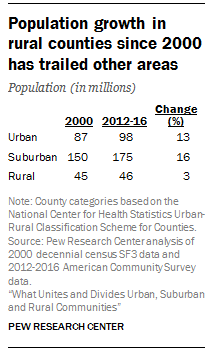
Cite as: Washburn, Kameko. 2019. Research Program Description. University of California. November. http://centerforethnography.org/content/kameko-washburn-research-program/essay
Kameko Washburn is a doctoral student and teaching assistant in the Program of Public Health at the University of California, Irvine (UCI). Here, she is also working towards a Graduate Specialization in Anthropologies of Medicine, Science, and Technology (MSTS) and a Graduate Emphasis in Medical Humanities. Previously she completed her B.A. in Anthropology at San Diego State University with a minor in biology, and a Master’s of Public Health degree at UCI. Her research interests have been developed through her past experiences, both academic and personal.
A number of factors contribute to the 50% higher death rates from unintentional injuries (which includes drug overdoses), falls, and motor vehicle crashes faced by rural Americans compared to urban residents. These include distinct occupational hazards, variation in prescription drug rates, ease of access to preventative health services and addiction treatments, road conditions, and distance to emergency services among others.
My research broadly focuses on the health disparities faced by rural populations throughout the western United States through the utilization of systems thinking and an ecological level approach as well as the implementation of qualitative methods.
The aim of my work is to improve the health and well-being of residents of rural communities. I feel it is imperative to re-frame what being rural is believed to represent and to understand these communities as individual entities that are not necessarily reflective of national trends. The best way to do this is to listen to and learn from residents.
According to the Health Resources and Services Administration, California hasas of July, 2019:
However, these numbers may change quickly as more frequent rural healthcare closures (compared to both historical trends and current urban trends) are occuring across the country.

While it's true that a higher proportion of the U.S. population is residing in urban and suburban areas than rural, the rural population has still seen an overall increase in residents.

Tap water in East Orosi, California is contaminated leaving low-income residents needing to buy bottled water. Individuals here and in other rural and largely agricultural communitites throughout California's Central and Salinas Valleys face distinct health challenges (which include among other issues unsafe water) that stem from environmental, political, and occupational conditions. In these regions, these issues are compounded by limited acess to medical care and distance from other services. My research focuses on the systems level determinants of the health inequities in these communities.
Photo by: The New York Times
According to HRSA, 20% of Americans live in rural areas however, according to the CDC, this number is 15%. Differences in rural designations and disagreement between federal, state, and local officials as well as other various groups cause difficulty in collecting information and conducting analyses.